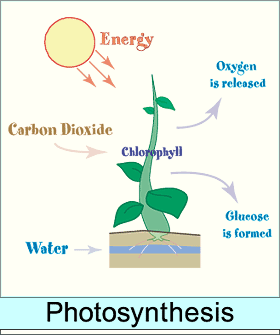7th Grade Biology

We have all carried out an experiment to show us how photosynthesis occurs and what the basic requirements to ensure its success are. The questions below should be done by you and your lab partner. Ensure you answer them all before the next class. Don’t forget to ask questions if any.
- 1.
What are some materials used in this experiment
- A.
Actual rockets
- B.
Alkaseltzer
- C.
2 liter pop bottles
- D.
Matches
Correct Answer
C. 2 liter pop bottlesExplanation
The given materials used in the experiment are actual rockets, alkaseltzer, 2 liter pop bottles, and matches. However, the question asks for "some" materials used, implying that there may be more materials involved in the experiment that are not listed. Therefore, the answer provided is incomplete and may not be the only correct answer.Rate this question:
-
- 2.
What is the first step in an experimental design?
- A.
Research
- B.
Hypothesis
- C.
Conclusion
- D.
Question
Correct Answer
D. QuestionExplanation
The first step in an experimental design is to formulate a question. This question sets the foundation for the entire experiment and guides the researcher in determining what they want to investigate. It helps in identifying the problem or topic of interest and provides a clear direction for the research. Without a well-defined question, it would be difficult to design an experiment and establish the necessary procedures to find answers or solutions. Therefore, formulating a question is essential to initiate the experimental design process.Rate this question:
-
- 3.
What is the purpose of this reaction?
- A.
To aid in global warming
- B.
To produce Oxygen
- C.
For plants to make their own food
- D.
Both b and c
Correct Answer
D. Both b and cExplanation
The purpose of this reaction is to both produce oxygen and allow plants to make their own food. Plants undergo photosynthesis, a process in which they use sunlight, water, and carbon dioxide to produce oxygen and glucose. Oxygen is released into the atmosphere, aiding in global warming, while glucose serves as the plant's source of energy for growth and development. Therefore, the correct answer is both b and c.Rate this question:
-
- 4.
What part of a cell does a plant cell have that an animal cell does not?
- A.
Cell wall
- B.
Chloroplast
- C.
Centriole
- D.
A and b
Correct Answer
D. A and bExplanation
A plant cell has both a cell wall and chloroplasts, which are not present in an animal cell. The cell wall provides structural support and protection for the plant cell, while chloroplasts are responsible for photosynthesis, converting sunlight into energy. These features are unique to plant cells and are not found in animal cells.Rate this question:
-
- 5.
What part of the plant cell captures energy from the sun?
- A.
Chloroplasts
- B.
Mitochondria
- C.
Cell membrane
- D.
Nucleus
Correct Answer
A. ChloroplastsExplanation
Chloroplasts are responsible for capturing energy from the sun in plant cells. They contain a pigment called chlorophyll, which absorbs sunlight and converts it into chemical energy through the process of photosynthesis. This energy is then used by the plant to carry out various metabolic processes and to produce glucose, which serves as a source of energy for the cell. Mitochondria are responsible for cellular respiration, not capturing energy from the sun. The cell membrane is involved in regulating the movement of substances in and out of the cell, while the nucleus contains genetic material and is involved in controlling cell functions.Rate this question:
-
Quiz Review Timeline +
Our quizzes are rigorously reviewed, monitored and continuously updated by our expert board to maintain accuracy, relevance, and timeliness.
-
Current Version
-
Aug 16, 2023Quiz Edited by
ProProfs Editorial Team -
Dec 07, 2009Quiz Created by
Therocknlt
 Back to top
Back to top



